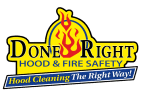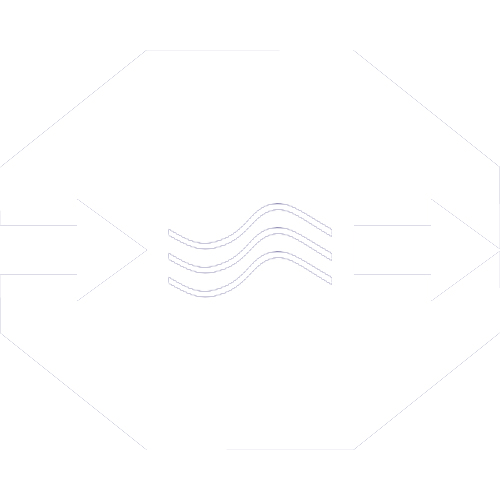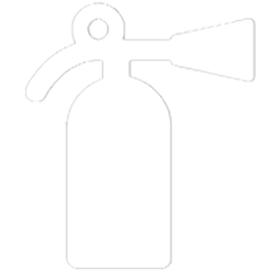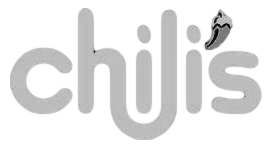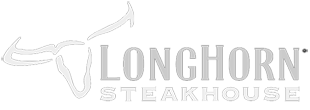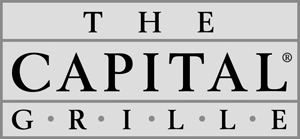Defining NFPA 86 For Florida Bakery and Pizza Shop Builds
When building or remodeling a Florida bakery, pizza shop, or any other establishment that features commercial ovens, fire safety is paramount. One of the most critical standards that addresses ovens and furnaces in an industrial or commercial setting is NFPA 86: Standard for Ovens and Furnaces. Although NFPA 86 covers a wide array of oven types and heating processes, this article zeroes in on the key fire safety systems you need to prioritize—particularly exhaust systems, pollution control units (PCUs), and fire suppression systems—to remain code-compliant and protect your staff, customers, and property.
In Florida, local amendments to the Florida Building Code (FBC) and the Florida Fire Prevention Code (FFPC) often reference or adopt NFPA 86 (along with other NFPA standards). As a result, understanding and adhering to these guidelines is vital to ensuring that your commercial ovens operate safely and that your new or remodeled bakery or pizza restaurant meets all required approvals. Let’s explore:
By focusing on exhaust, PCUs, and fire suppression—all of which are addressed or influenced by NFPA 86—you’ll have the foundational knowledge to design a safe, efficient, and code-compliant operation in the Sunshine State.
1. NFPA 86 Overview
1.1 Scope and Purpose
NFPA 86 sets forth minimum fire safety requirements for the design, operation, and maintenance of ovens, furnaces, and associated equipment. This standard applies to many types of heat-processing equipment across various industries—ranging from industrial furnaces to commercial ovens, including those used in bakeries and pizza shops.
Key areas NFPA 86 addresses:
- Potential fire and explosion hazards from combustible materials.
- Proper ventilation and exhaust system design.
- Interlocks, instrumentation, and controls to prevent unsafe operating conditions.
- Guidelines for integrated or standalone fire suppression systems.
1.2 Oven Classifications
NFPA 86 classifies ovens based on the presence of flammable vapors, combustible materials, and specific temperature ranges. While a typical pizza oven might not reach the highest hazard classification found in heavy industry, the standard still provides valuable guidelines to prevent:
- Grease fires
- Smoke accumulation
- Explosion risks (if vapors or dust become trapped)
In Florida’s hospitality sector—where a large volume of baked goods, pizzas, or other heat-processed foods are produced daily—following NFPA 86 helps mitigate such hazards, ensuring your exhaust systems, pollution control units, and suppression setups work as intended.
2. The Role of Exhaust Systems in Oven Safety
2.1 Why Exhaust Systems Matter
Commercial ovens generate heat, moisture, combustion byproducts, and—depending on the product—grease-laden vapors. A robust restaurant exhaust system:
- Removes smoke and odors from the baking or cooking process.
- Prevents excessive heat buildup that could damage oven components or contribute to fire risks.
- Helps maintain air quality for employees and customers.
- Aids in complying with NFPA 86 guidelines that require proper ventilation to avoid flammable gas accumulation.
2.2 Exhaust Duct Design per NFPA 86
Under NFPA 86, exhaust ducts connected to ovens must be designed to:
- Handle High Temperatures: The material and insulation should withstand the maximum oven operating temperature (plus a safety margin).
- Allow Clearance from Combustibles: Adequate spacing from any combustible materials in walls, ceilings, or roof structures.
- Provide Cleanout Access: Ducts should be designed or installed with cleanout openings to remove grease or other residue over time.
In Florida, local building departments often cross-reference NFPA 96 (ventilation for commercial cooking operations) when dealing with greasy vapors. The lines between NFPA 86 and NFPA 96 can blur if your oven produces large volumes of grease-laden air (e.g., some pizza operations use cheese and high-fat toppings). Always confirm with your local Authority Having Jurisdiction (AHJ) which standard or combination of standards applies to your specific setup.
2.3 Interlocks and Alarm Systems
NFPA 86 also stresses the importance of interlocks—control features ensuring that if an exhaust system fails, the oven:
- Shuts down or
- Issues an alarm to alert operators.
This prevents dangerous heat or fumes from accumulating in a malfunctioning system. Interlocks are especially critical in gas-fired ovens, where incomplete combustion can lead to a buildup of carbon monoxide or other flammable gases if the exhaust isn’t functioning.
3. Pollution Control Units (PCUs): Reducing Smoke and Odors
3.1 Introduction to PCUs
Pollution Control Units (PCUs) are specialized equipment often installed in-line with the exhaust duct. They capture, filter, or treat smoke, grease, particulates, and odors before venting air outdoors. This is particularly relevant for Florida bakery and pizza shop owners in densely populated or tourist-oriented areas, where local regulations can be strict about:
- Odor complaints (from cooking smells).
- Particulate emissions that affect neighboring businesses or residences.
- Compliance with environmental standards.
While NFPA 86 doesn’t exclusively focus on PCUs, it acknowledges that auxiliary safety equipment—including filtration or emission-control systems—must be installed and maintained in a manner that does not create additional fire hazards.
3.2 Fire Hazards in PCUs
PCUs are often electrostatic precipitators, charcoal filters, or other mechanical filtration systems. Over time, grease, carbon, and other combustible materials can accumulate inside these units. If not regularly cleaned and inspected, there’s a risk of:
- Flash fires sparked by high temperatures or rogue ignition sources.
- Smoke backflow if filters become clogged.
NFPA 86 encourages ensuring that any ventilation add-ons, like PCUs, align with the oven’s design to prevent:
- Excessive back pressure in the exhaust line.
- Impairing the interlocks or flow sensors.
- Ignition of grease deposits inside PCU components.
3.3 PCU Maintenance and Inspection
Florida codes often cross-reference NFPA 96 for cleaning intervals, but under NFPA 86 guidelines, your system’s manufacturer recommendations typically dictate how often you clean or replace filters. Common PCU maintenance tasks include:
- Monthly or quarterly filter replacement (or cleaning in the case of permanent filters).
- Grease and residue removal in drip pans and internal compartments.
- Inspection of seals and gaskets to maintain proper airflow.
- Testing of any built-in fire suppression nozzles or temperature sensors.
4. Fire Suppression Systems for Ovens and Associated Ductwork
4.1 When Are Fire Suppression Systems Required?
NFPA 86 details scenarios where integrated or external fire suppression systems may be necessary. For large ovens or those with a significant fire load (e.g., high-fat content baking, continuous conveyor pizza ovens, or ovens that use oils or produce flammable byproducts), a suppression system might be:
- Built into the oven’s exhaust ducting.
- Standalone system specifically targeting the oven’s interior.
- Extended wet or dry chemical lines from the kitchen hood system that cover the oven and ductwork.
Your local AHJ can clarify if your oven requires a dedicated suppression system, especially if the oven is a distinct piece of equipment separate from any standard kitchen hood setups.
4.2 Types of Suppression Agents
Common fire suppression agents include:
- Wet Chemical (Class K): Potassium-based solutions designed for grease-laden environments. Typically found in fryer hoods but can be adapted to high-heat ovens.
- Dry Chemical: Powder-based agents that smother flames by interrupting the chemical reaction.
- Water Mist or Sprinkler Heads: Some systems rely on overhead sprinklers that discharge water or water mist if interior oven temperatures exceed a set threshold or if a flame is detected.
NFPA 86 focuses on ensuring these agents and systems are compatible with the oven’s operating temperature and any potential grease or particulate accumulation. To learn more, read our comprehensive guide to choosing the right fire suppression system for your kitchen.
4.3 Suppression System Interlocks
Just as with exhaust interlocks, NFPA 86 encourages linking fire suppression systems with oven controls so that:
- Fuel supply (gas or oil) is shut off if the system discharges.
- Electrical power to heating elements is disabled.
- An alarm notifies operators (and potentially a monitoring station) of the discharge event.
This multi-layered approach prevents continued ignition sources from feeding a fire once suppression has begun.
5. Florida-Specific Considerations and Code Adoptions
5.1 Florida Building Code (FBC) and Florida Fire Prevention Code (FFPC)
Florida adopts many NFPA standards, but the state also modifies them via:
- Florida Building Code (Mechanical & Fuel Gas)
- Florida Fire Prevention Code (NFPA 1 & NFPA 101)
Although NFPA 86 isn’t always explicitly cited in the general building code sections for restaurants, local fire marshals or building officials frequently reference NFPA 86 for:
- Large pizza ovens with conveyor belts or rotating racks.
- High-capacity baking ovens used in industrial or commercial bakery operations.
5.2 Integration with NFPA 96 and NFPA 17/17A
For grease-heavy operations, Florida AHJs often require compliance with NFPA 96 (commercial kitchen ventilation) and potentially NFPA 17 or 17A for chemical suppression systems. While NFPA 86 focuses primarily on ovens and furnaces, you may need to cross-check guidelines if your operation straddles the line between a standard kitchen hood system (NFPA 96) and a large industrial oven setup (NFPA 86).
5.3 Local Amendments and Permits
Always check for county or city ordinances that:
- Mandate pollution control units for pizza or bakery ovens in densely populated areas.
- Require special occupant load calculations or additional egress measures if the oven area produces smoke that could obstruct exits.
- Enforce stricter cleaning intervals for ductwork or PCUs.
Securing the correct mechanical permits and fire marshal approvals from the outset will save considerable time and expense. Non-compliance can lead to forced shutdowns, fines, or expensive retrofits after the fact.
6. Common Pitfalls and Compliance Tips
Even well-informed Florida bakery or pizza shop owners can make oversights. Here are some of the most frequent issues:
- Undersized Exhaust Fans
- Insufficient airflow leads to heat, grease, and vapor buildup in the oven chamber or duct.
- Tip: Consult fan manufacturers and perform thorough airflow calculations per NFPA 86 requirements.
- Neglected PCU Maintenance
- Filters and precipitators clogged with grease, leading to fires or odor complaints.
- Tip: Adhere to a cleaning schedule recommended by the PCU manufacturer and code references.
- Overlooking High-Temperature Areas
- Ovens that consistently operate above normal commercial cooking temps may require specialized duct materials or additional safety sensors.
- Tip: Evaluate maximum operating temperatures and choose appropriate duct construction.
- Improperly Integrated Suppression Systems
- A kitchen hood suppression system might not adequately protect a separate oven unless specifically extended or approved by an engineer.
- Tip: Work with licensed fire protection engineers to design or adapt suppression coverage.
- Inadequate Interlock Wiring
- Failing to wire ovens, exhaust fans, and suppression systems so that a single point of failure or fire triggers shutoffs.
- Tip: Follow NFPA 86 guidelines for interlocks or safety shutoff valves. Confirm with local inspectors before finalizing wiring.
7. Design and Installation Best Practices
7.1 Start with Professional Consultation
Hire a licensed mechanical engineer or fire protection engineer experienced in NFPA 86 compliance. They’ll help with:
- Equipment selection
- System sizing
- Layout and duct runs
- Fire suppression integration
7.2 Verify Manufacturer Specs
Both oven and PCU manufacturers typically provide:
- Installation guidelines specifically referencing NFPA standards.
- Recommended duct velocities for removing particulates.
- Maintenance intervals for filters, precipitators, or other media.
Adhering to these specs is often a code requirement and ensures you won’t void warranties or create unsafe conditions.
7.3 Incorporate Accessible Cleanouts
Oven exhaust systems that handle grease or high levels of particulates need cleanout ports at strategic points along the duct run. This makes periodic maintenance easier and reduces the risk of hidden grease fires. NFPA 86 and NFPA 96 both stress the importance of these access points.
7.4 Commissioning and Testing
Before opening your bakery or pizza shop to the public, conduct a full system test:
- Run the ovens at their maximum capacity.
- Observe exhaust airflow; measure temperature and static pressure if needed.
- Trigger the fire suppression system manually (if possible) or simulate a test to confirm interlocks.
- Inspect the PCU if installed, ensuring it handles the smoke and grease output effectively.
Record all results as part of your final documentation for the AHJ or your insurance provider.
8. Maintaining and Inspecting Your Systems
8.1 Regular Cleaning Schedules
- Exhaust Fans and Ducts: Inspect monthly, clean quarterly or more frequently if recommended by NFPA 96 or the oven’s manufacturer.
- PCUs: Check filter load and efficiency at least monthly. Clean or replace filters as needed.
- Fire Suppression: Comply with NFPA 25 (for water-based systems) or NFPA 17/17A (for dry or wet chemical), typically requiring biannual or annual inspections by a licensed professional.
8.2 Professional Inspection and Testing
Engage a licensed fire protection and mechanical contractor for in-depth inspections:
- Grease accumulation in ducts or PCUs.
- Sensor and interlock functionality.
- Suppression system discharge tests or cylinder integrity checks.
- Exhaust fan motor condition and airflow verification.
Maintaining a detailed record of inspections and services is crucial for code compliance and insurance claims.
8.3 Upgrades and Code Changes
As NFPA 86 evolves or local Florida amendments change, you may need to retrofit older ovens with updated sensors, safer duct materials, or more efficient PCUs. Keep in contact with your AHJ or a trusted fire safety consultant to stay current on new requirements.
9. Case Study: A Florida Pizza Shop’s Oven Expansion
9.1 Scenario
A popular pizza shop in Tampa decided to expand its kitchen and add a conveyor-style pizza oven. This oven operated at higher temperatures and produced more grease-laden vapors than the shop’s previous setup. The owners knew they had to meet NFPA 86 guidelines to pass local inspections.
9.2 The Upgrades
- Enhanced Exhaust System
- They installed a larger exhaust fan to handle increased airflow, ensuring the duct material was rated for the oven’s maximum operating temperature.
- Cleanout ports were placed at every duct bend and at 12-foot intervals for easy maintenance.
- Pollution Control Unit
- Due to odor complaints from nearby businesses, the owners integrated a PCU with a multi-stage filter system (grease baffles plus carbon media).
- A temperature sensor shut down the oven if the PCU overheated or became clogged.
- Fire Suppression
- A dedicated wet chemical line extended from the shop’s existing kitchen hood suppression system to cover the new oven’s duct collar area.
- Interlocks were installed to cut gas supply if the system discharged.
9.3 Outcome
After a thorough commissioning test and AHJ inspection, the pizza shop passed with flying colors. The owners reported fewer odor complaints and no issues with grease accumulation. Their robust cleaning schedule and integrated fire suppression system provided peace of mind, allowing them to focus on delivering great pizza to customers.
10. Conclusion
NFPA 86 plays a pivotal role in guiding Florida bakeries, pizza shops, and other commercial cooking operations that rely on high-heat ovens. While the standard addresses many facets of oven safety, three areas stand out for their immediate impact on fire prevention and code compliance:
- Exhaust Systems: Proper airflow, correct ducting materials, and reliable interlocks are essential to removing heat, smoke, and combustible vapors.
- Pollution Control Units (PCUs): From tackling odor complaints to preventing grease fires, PCUs must be sized, installed, and maintained correctly—especially in high-output cooking environments.
- Fire Suppression Systems: Whether integrated directly into the oven or connected to the exhaust duct, these systems must swiftly detect and quell any fire, shutting down heat and fuel sources to prevent escalation.
By following NFPA 86 guidelines and Florida-specific code amendments, you create a safer commercial kitchen environment—both for your staff and your customers. And with proactive maintenance, regular inspections, and a firm understanding of these critical fire safety systems, your operation can run smoothly and code-compliant, allowing you to focus on the real star of the show: delicious baked goods and pizzas.
Additional Resources
1. National Fire Protection Association (NFPA) – NFPA 86: Standard for Ovens and Furnaces
Link: https://www.nfpa.org/codes-and-standards/all-codes-and-standards/list-of-codes-and-standards/detail?code=86
Relevance: This is the official source for NFPA 86, providing direct access to the standard that governs fire safety requirements for ovens, including those used in commercial food preparation settings like bakeries and pizza shops.
2. Florida Department of Business and Professional Regulation – Florida Fire Prevention Code
Link: https://www.myfloridalicense.com/fire-prevention/
Relevance: This page provides access to the Florida Fire Prevention Code (FFPC), which incorporates various NFPA codes (including 86, 96, 17, and others) and outlines how they’re applied or amended in the state of Florida—crucial for ensuring local compliance.
3. UL Solutions – Pollution Control Units (PCUs) and Grease Extraction Systems
Link: https://www.ul.com/services/grease-duct-and-pollution-control-units
Relevance: UL is a nationally recognized testing lab, and this page offers technical and safety information on pollution control units (PCUs) used in commercial kitchens, supporting best practices for smoke, grease, and odor mitigation referenced in NFPA 86 and 96.
